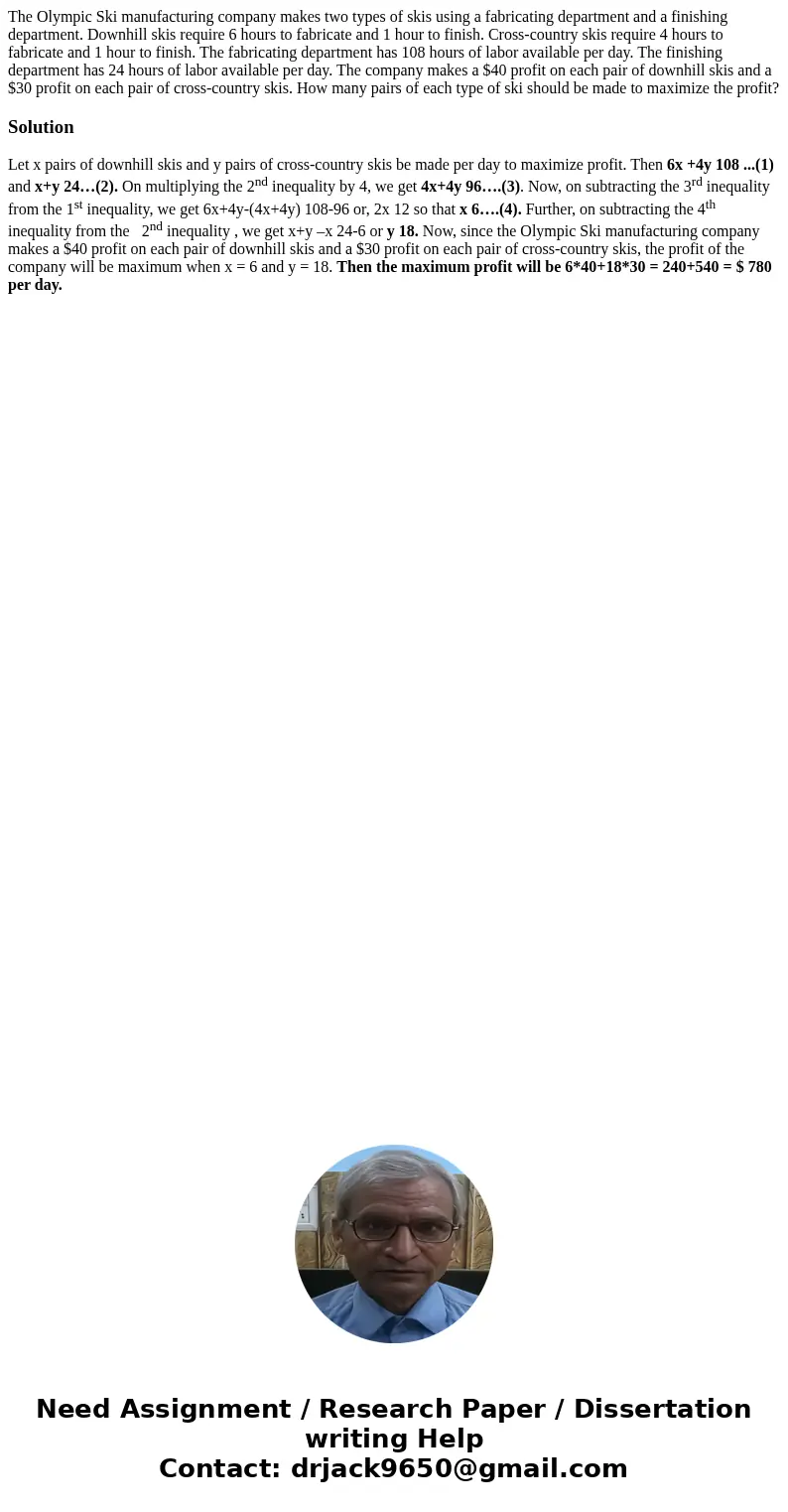The Olympic Ski manufacturing company makes two types of ski
The Olympic Ski manufacturing company makes two types of skis using a fabricating department and a finishing department. Downhill skis require 6 hours to fabricate and 1 hour to finish. Cross-country skis require 4 hours to fabricate and 1 hour to finish. The fabricating department has 108 hours of labor available per day. The finishing department has 24 hours of labor available per day. The company makes a $40 profit on each pair of downhill skis and a $30 profit on each pair of cross-country skis. How many pairs of each type of ski should be made to maximize the profit?
Solution
Let x pairs of downhill skis and y pairs of cross-country skis be made per day to maximize profit. Then 6x +4y 108 ...(1) and x+y 24…(2). On multiplying the 2nd inequality by 4, we get 4x+4y 96….(3). Now, on subtracting the 3rd inequality from the 1st inequality, we get 6x+4y-(4x+4y) 108-96 or, 2x 12 so that x 6….(4). Further, on subtracting the 4th inequality from the 2nd inequality , we get x+y –x 24-6 or y 18. Now, since the Olympic Ski manufacturing company makes a $40 profit on each pair of downhill skis and a $30 profit on each pair of cross-country skis, the profit of the company will be maximum when x = 6 and y = 18. Then the maximum profit will be 6*40+18*30 = 240+540 = $ 780 per day.

 Homework Sourse
Homework Sourse